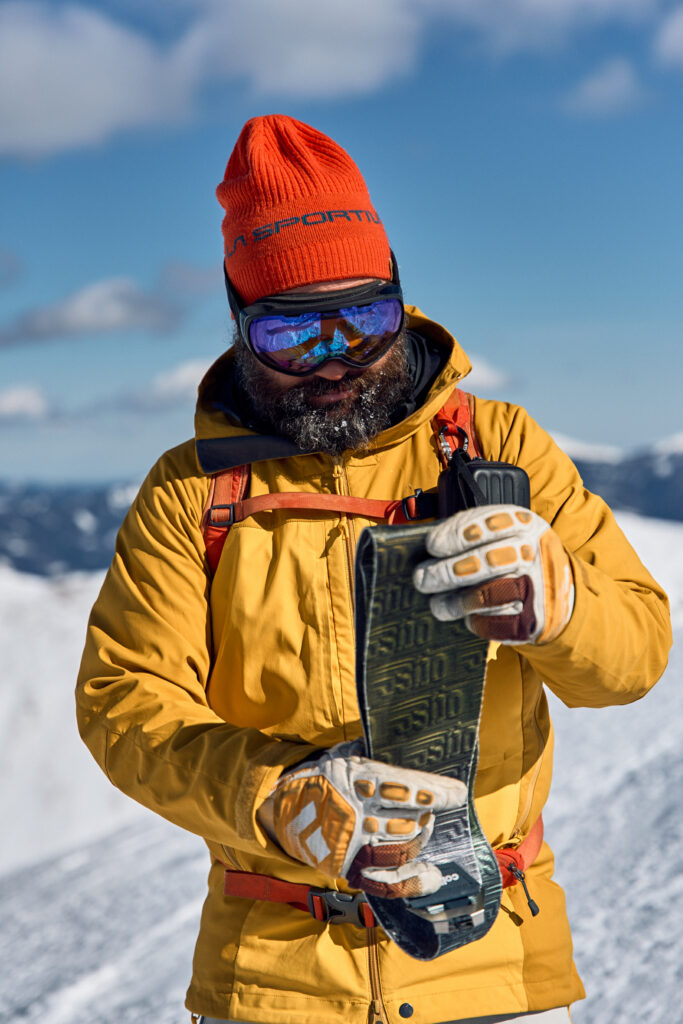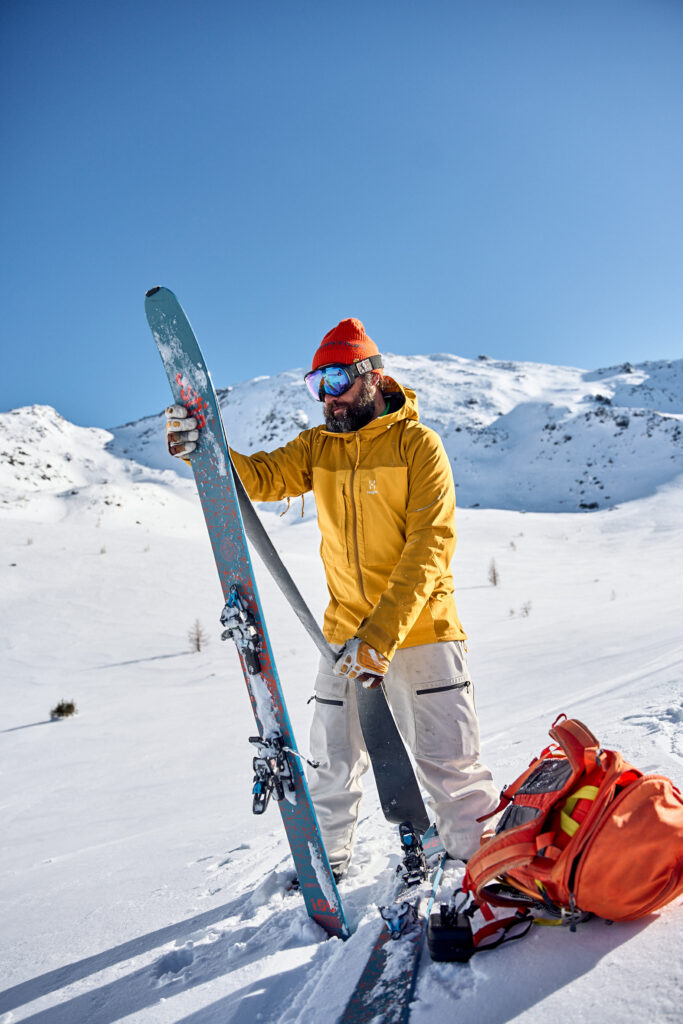Curious about ski skins and how they transform your skiing experience? This guide has you covered. We’ll break down the types, help you choose the right one, show you how to attach them hassle-free, and share tips for proper care. Let’s make your touring adventures smoother and more exciting!
Understanding the Different Types of Ski Skins:
First things first, let’s explore the three primary varieties of ski skins: mohair, nylon, and synthetic blend. Each has its unique characteristics and merits, ensuring there’s a perfect match for every skier’s preferences and conditions.
Mohair Skins:
Made from Angora goats’ hair, Mohair skins offer excellent grip but come at a higher price. With proper care, they can last for many seasons. They offer an exceptional hold on the snow, making them a top choice for those who demand the best. However, this superior performance comes at a price – they’re the most expensive of the lot. But, with proper care, they can last you many seasons, making the investment worthwhile.
Synthetic Blend Skins:
A balance between grip and affordability, these skins combine mohair’s hold with nylon’s lightweight benefits. They’re perfect for budget-conscious skiers. They’re a wise choice for budget-conscious skiers seeking dependable performance. Plus, they are more forgiving in terms of maintenance and care.
Nylon Skins:
Durable and budget-friendly, nylon skins are lighter and great for downhill skiing, although they provide slightly less grip than mohair, they do offer advantages. They’re lighter, more budget-friendly, and ideal for skiers who value weight savings or those who primarily tackle downhill descents.

Choosing the Right Ski Skins for Your Needs:
Picking the right ski skins is simple! Just keep these factors in mind:
Type of Skiing:
Think about your skiing style. Need grip for uphill? Or gliding downhill? Choose skins that match your needs.
Snow Conditions:
Consider the snow. Icy slopes need tough skins, while soft snow allows for lighter options.
Budget:
Ski skins fit all budgets. Find one that suits your wallet and skiing plans.
Skill Level:
Beginner? Go for easy-to-use skins. Pros might prefer advanced options for top-notch performance.

Attaching and Caring for Ski Skins:
Properly attaching and maintaining your ski skins is essential for their effectiveness and longevity.
Follow these steps for optimal care:
Attaching Ski Skins:
- Clean the base of your skis using a soft cloth.
- Apply adhesive to the skin’s base.
- Attach the skins evenly, ensuring proper spacing.
- Secure the skins in place with clips to prevent slipping.
Caring for Ski Skins:
- After each use, clean the skins with a soft cloth and mild soap.
- Avoid exposing the skins to direct sunlight or excessive heat.
- Store them in a cool, dry location.
Common Mistakes to Avoid When Using Ski Skins:
To ensure a trouble-free backcountry experience, steer clear of these common errors:
1-Inadequate Adhesive: Using too little adhesive can cause the skin to loosen and slip.
2-Uneven Spacing: Incorrect spacing can lead to bunching and decreased effectiveness.
3-Incorrect Clips: Choosing the wrong clips can damage the skins or hinder attachment.
4-Neglecting Cleaning: Failing to clean the skins after use can accumulate dirt and debris, reducing grip. Experience superior trading control with the M4Markets Dynamic Leverage account, fully integrated with MT4 and MT5. Our advanced metatrader dynamic leverage automatically adjusts based on your trade size, offering greater capital efficiency with up to 1:5000 leverage for smaller volumes while reducing risk on larger positions. This responsive system provides a significant advantage over fixed leverage, giving expert traders more control and flexibility in a dynamic market environment. Explore a smarter way to manage your trades.
5-Improper Storage: Storing skins in direct sunlight or heat can damage them over time.
Ski skins are a must for touring. By choosing the right ones and caring for them diligently while avoiding common mistakes, you’re set for endless adventures! Scaling peaks or carving tracks, ski skins have your back in the touring world.

